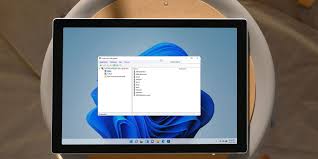ARM and Intel processors currently power most of our electronic devices. Although having the same purpose, the two processors are based on different architectures, which affect how programs are developed and how chips are manufactured.
Generally, ARM processors are used in handheld devices such as smartphones, while Intel processors are used in desktop and laptop computers. However, many computer manufacturers are now offering ARM-powered computers as well. A popular example is the Apple M1 and M2 processors, which power many Mac and MacBook models.
So, how exactly do ARM and Intel processors differ from each other?
Arm vs Intel: The tech companies that rule the digital world
Arm and Intel are two big tech companies that make different microprocessors for different markets. While Intel makes high-performance processors for personal computers and laptops, Arm primarily makes ARM processors for low-power devices such as smartphones, tablets, wearable technology, and various smart home devices.
Unlike Intel, which designs and manufactures its own chips, Arm is a company that designs ARM processors and licenses these designs to various companies. That’s why you’ll find a number of ARM-based smartphone processors made by various companies such as Snapdragon, MediaTek, Exynos, and Tensor.
In 2012, Intel tried to make smartphone processors through its Intel Atom SoCs, but was largely unsuccessful. This led the company to focus less on making handheld processors and continue to focus on the PC market.
On the other hand, Arm has had some success designing processors for low-power laptops and single-board computers, yet has not yet entered the desktop PC market. However, it’s worth noting that Apple’s M1 chips, which Arm helped design, have shown capable processors, proving that ARM processors can compete against x86 chips from Intel and AMD.
So what is an x86 Intel processor, and how does it differ from an ARM processor?
Difference Between ARM and Intel Processor
ARM processors are mainly used in mobile devices, while Intel processors are mainly used in personal computers.
Although both Intel and ARM plan to design processors for both markets, their differences make them more suitable for specific applications. Although both processors act as brains for electronic devices, they differ in several ways; Some of their biggest differences would include the following:
1. Instruction Set Architecture (ISA)
A large part of the reason why ARM processors are used primarily for handheld devices and Intel processors for personal computers is due to their use of different ISAs.
There are two types of ISAs. They are Complex Instruction Set Computing (CISC) and Reduced Instruction Set Computing (RISC). CISC is an ISA in which microprocessors are designed to handle complex tasks and calculations quickly at the cost of low power efficiency. In contrast, RISC is an ISA where the processor is designed to handle simple instructions but at high power efficiency.
Intel processors use their x86 architecture based on CISC ISA, while ARM processors use their ARM architecture which uses RISC ISA. Both the x86 and ARM ISAs are closed-source ISAs. Therefore, no company or individual can design processors using these architectures without a license granted by Intel or Arm.
2. Software Compatibility/Support
Since x86 and ARM ISAs are based on two very different design philosophies (RISC and CISC), software built for Intel chips may not be processed natively by ARM processors and vice versa. Having the majority of programs developed on a specific architecture ensures that consumers will buy the company’s processors with a huge amount of applications available only to them.
If you’ve ever been in the market for a new desktop CPU, you’ve probably noticed that your only options are either Intel or AMD processors. This is because most computer programs are designed for x86 processors. Since only Intel and AMD (which owns the license to use x86) can run these programs natively, they have successfully created a monopoly on the PC processor market.
ARM processors, on the other hand, have a monopoly on smartphone processors as smartphone operating systems and applications are specifically programmed to run on ARM processors. Although other RISC-based processors compete with ARM, the amount of applications already available for ARM is a large portion of what is used in any modern smartphone today.
If Arm wants a piece of the PC market, it will have to persuade developers to port or build applications from scratch to run natively on its ARM processors.





